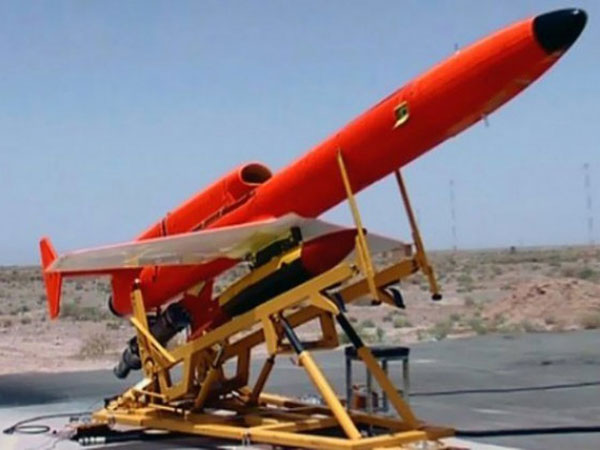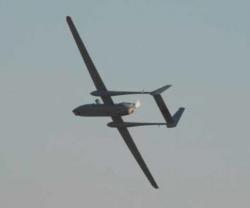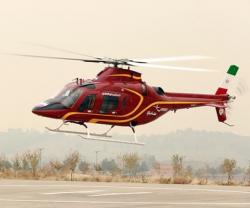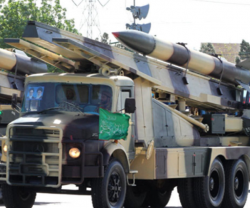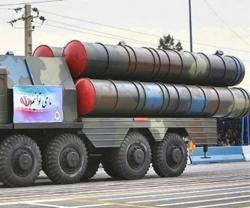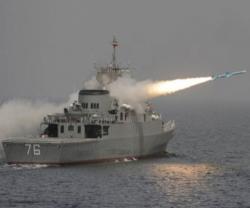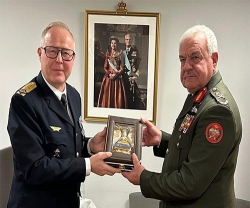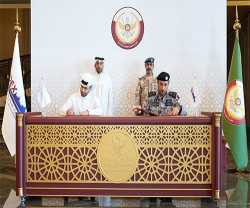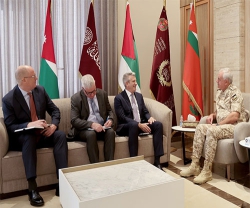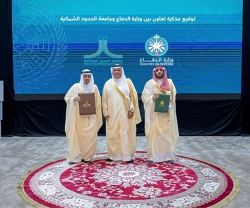Iran's hi-tech drone, Ababil-3 (Swallow-3), is capable of flying a top speed of 200 kilometers per hour and enjoys a night vision capability, enabling it to take image and footage as it is flying over targets day and night.
The drone has a flying range of 100 kilometers and a top speed of 200 kilometers per hour. It can fly to a ceiling of 5,000 meters and enjoys a high photography and imaging technology and has a 4-hour-long flight durability.
In September 2012, Iran announced that it has started using UAVs in its air defense units as part of its broader plans for strengthening the country's air defense capability.
In December 2013, Commander of the Islamic Revolution Guards Corps Major General Mohammad Ali Jafari said the IRGC is capable of mounting guided missiles and bombs on its drones.
“We have recently acquired the capability to mount guided and precision-targeting missiles with pinpointing capability and bombs on drones, which is actually among branches of advanced hi-tech in this field,” Jafari said in December.
He referred to Iran’s latest achievements in building drones, and said, “Our latest achievement in this regard is a drone which can fly for 30 hours and high-speed engines can increase its range.”
In November, Iranian Defense Minister Brigadier General Hossein Dehqan announced that Iran's new drone enjoys unique strategic capabilities, including 30-hour-long flight durability, and has been developed for combat and surveillance missions. He said the new drone, ‘Fotros’, has been designed and built by the Iranian Airplane Manufacturing Industries Company affiliated to the Defense Ministry’s Aviation Industries in cooperation with knowledge-based companies and academic centers and on the basis of the needs of the country’s Armed Forces.
“This strategic drone has an operational range of 2,000 kilometers, and can fly to a ceiling of 25,000 feet in altitude for 16 to 30 hours, and these specifications enable it to conduct combat missions in addition to surveillance and reconnaissance missions. Fotros can be armed with various types of "air-to-surface missiles and rockets". The reliability test of the drone has been successfully conducted in the country’s laboratories and test centers, including standard international land tests at low, medium and high speed, adding that test results have been even better than what was expected,” Dehqan said.
The Minister further pointed to the missions which could be done by Fotros in detail, and said the drone can be used for “protecting land and sea borders, monitoring oil pipelines, telecommunication lines and road traffic control, monitoring affected areas during earthquakes, blaze and floods, and environment protection", adding that it can send "real-time photos and images while it is on a missions".
He reiterated that Iran’s Defense Ministry has become self-sufficient in designing and manufacturing different kinds of defensive, offensive and surveillance drones.
General Dehqan underlined that Iranian researchers were then working on various models and designs of drones according to the country’s defensive needs.
Also in September 2012, Iran announced that it has started using UAVs for its air defense units as part of its broader plans for strengthening the country's air defense capability.
On September 3, 2012, Commander of Iran's Air Defense Unit Brigadier General Farzad Esmayeeli said Iran has equipped its air defense units with Haazem drones. Haazem is a drone designed and manufactured by Iranian air defense experts in three short, mid and long range models and for air defense missions.
The drone can be used as a target for air defense systems and also for reconnaissance missions, can be equipped with missiles and used for aerial bombardments.
Source: FNA

